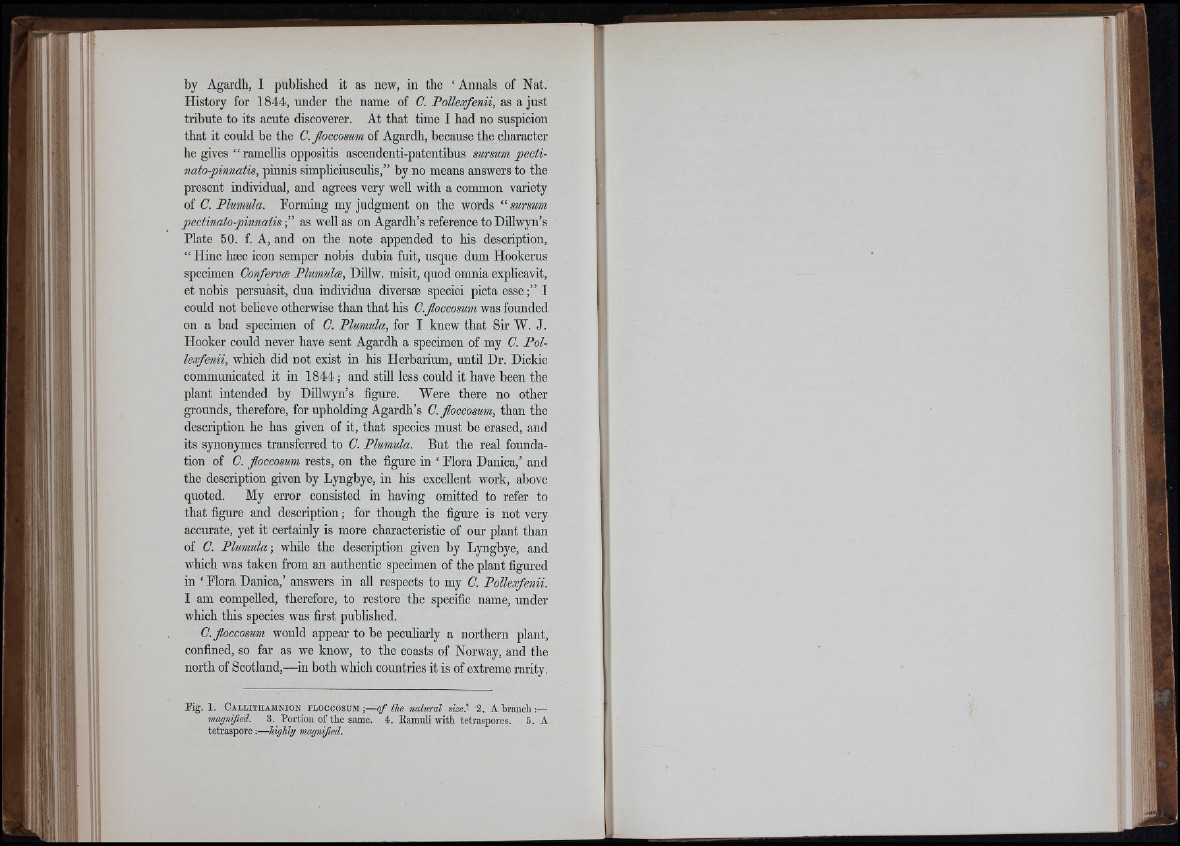
: i|Ì
. l i I '»’i?
by Agardli, I published it as new, in the ‘ Annals of Nat.
History for 1844, under the name of C. Pollewfenii, as a just
tribute to its acute discoverer. At that time I had no suspicion
that it could be the C.Jloccomm of Agardh, because the character
he gives “ ramellis oppositis ascendenti-patentibus surmm pecti-
nato-pinnatis, pinnis simpliciuscidis,” by no means answers to the
present individual, and agrees very well with a common variety
of C. Plumula. Porming my judgment on the words “ sursum
pectinato-pinnatis ” as well as on Agardh’s reference to Ddlwyn’s
Plate 50. f. A, and on the note appended to his description,
“ Hinc hiBC icon semper nobis dubia fuit, usque dum Hookerus
specimen Confervce Plmiulce, Ddlw. niisit, quod omnia explicavit,
et nobis persuasit, dua individua diversse speciei picta esse I
could not believe otherwise than that his C. floccosum was founded
on a bad specimen of C. Plumula, for I knew that Sir W. J.
Hooker could never have sent Agardh a specimen of my C. Pol-
lexfenii, which did not exist in his Herbarium, until Dr. Dickie
communicated it in 1844 ; and still less could it have been the
plant intended by Dillwyn’s figure. Were there no other
grounds, therefore, for upholding Agardh’s C. floccosum, than the
description he has given of it, that species must be erased, and
its synonymes transferred to C. Plumula. But the real foundation
of C. floccosum rests, on the figure in ‘ Flora Danica,’ and
the description given by Lyngbye, in his excellent work, above
quoted. My error consisted in having omitted to refer to
that figure and description ; for though the figure is not very
accurate, yet it certainly is more characteristic of our plant than
of C. Plumula; while the description given by Lyngbye, and
which was taken from an authentic specimen of the plant figured
in ‘ Flora Danica,’ answers in all respects to my C. Pollexfenii.
I am compelled, therefore, to restore the specific name, under
which this species was first published.
C. floccosum would appear to be peculiarly a northern plant,
confined, so far as we know, to the coasts of Norway, and the
north of Scotland,—in both which countries it is of extreme rarity.
F i g . l . Callithamnion floccosum ;— o/ ¿ / ¿ e natural size! 2. A branch:—
magnified. 3. Portion of the same. 4. Eamuli with tetraspores. 5. A
tetraspore:— highly magnified.